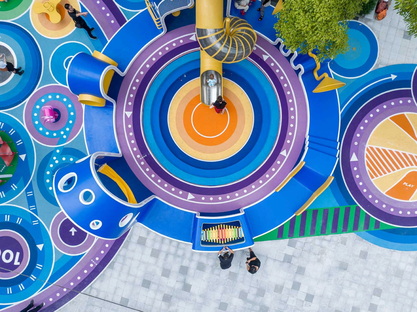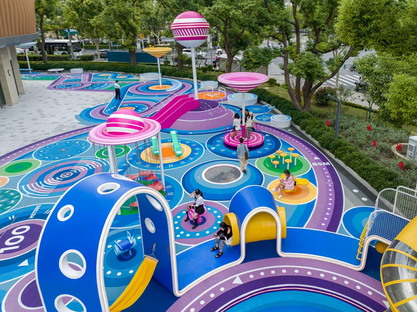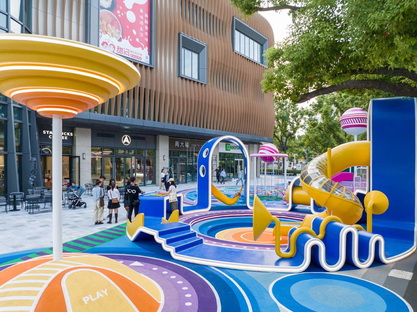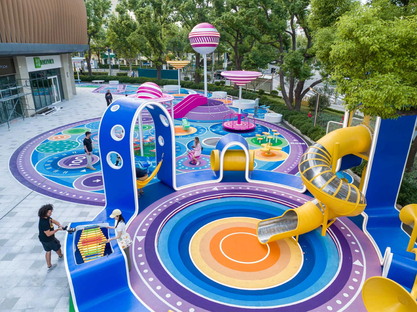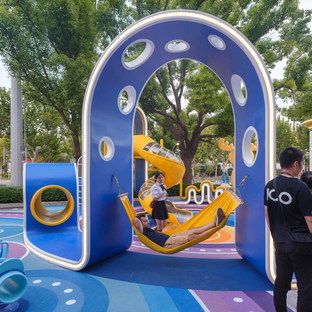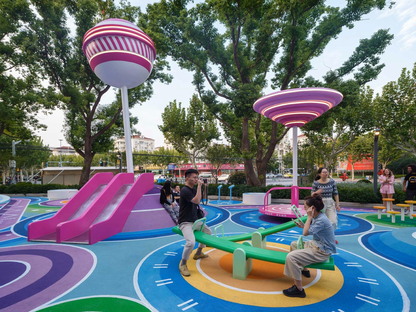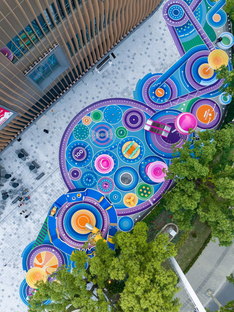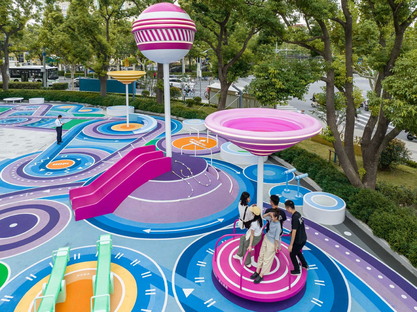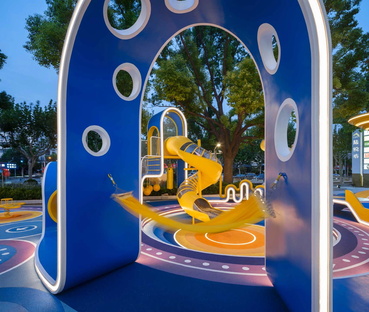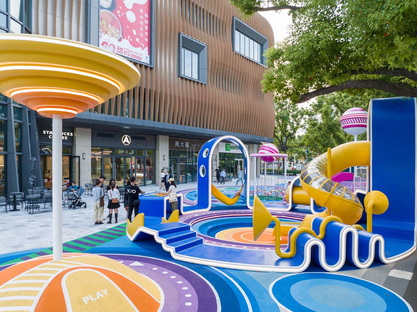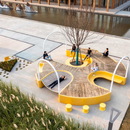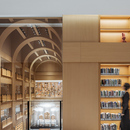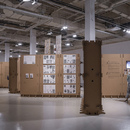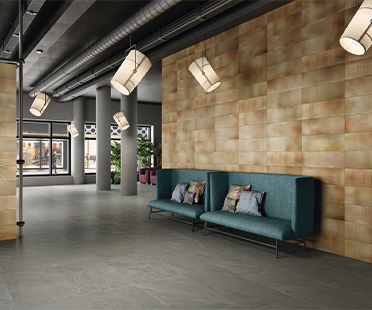27-12-2022
Lollipop Street, public space in Shanghai by 100architects
- Blog
- Landscaping
- Lollipop Street, public space in Shanghai by 100architects
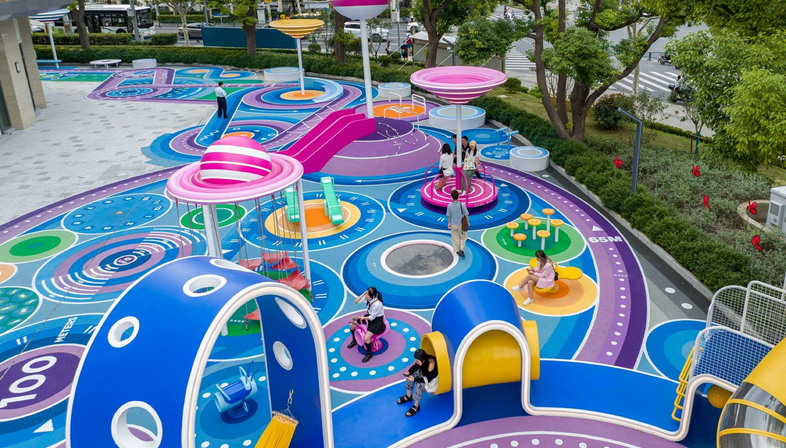 The 100architects studio, founded by Marcial Jesús and Javier González and based in Shanghai, is known to our readers for their interventions at the urban level in search of activating public space. Colourful and joyful projects, designed to improve the quality of urban life and help promote the interaction between users, who are not only the children and young individuals to whom the projects are addressed in the first place, but also the adults who accompany them.
The 100architects studio, founded by Marcial Jesús and Javier González and based in Shanghai, is known to our readers for their interventions at the urban level in search of activating public space. Colourful and joyful projects, designed to improve the quality of urban life and help promote the interaction between users, who are not only the children and young individuals to whom the projects are addressed in the first place, but also the adults who accompany them.The studio’s latest project is whimsically named Lollipop Street, a project completed in the front square of the Jinyang L-Site shopping mall, located in Shanghai's free trade zone, Lujiazui. A project, in fact, designed as a landmark to attract young people and families visiting the shopping mall in the Pudong district. In practice, an outdoor play area also conceived as a point of welcome and aggregation for the community, right in the front square of the shopping centre.
As implied by the name – and as we can see from the photos of course – Lollipop Street draws inspiration from the world of sweets. As the architects explain in this regard: "It is a project inspired by the imaginary “candy world”, borrowing shapes and colours from pop culture objects such as candy canes, lollipops, popsicles and many more. It depicts an eye-catching, colourful and intricate knot designed as an eventful tangled path that, by twisting, bending and entangling, creates pockets of opportunity for play, entertainment and leisure."
Taking a closer look at the design, the new playground exploits the L-shape of the site, using the full potential of the available space in a practical and intelligent way. In this sense, the approach route and the play path are crucial to ensure the high usability of Lollipop Street, but also the safety of the shopping mall, which must remain accessible to fire-fighting vehicles. All three-dimensional objects have thus been strategically positioned concentrically over specific circles, leaving the emergency fire route fully accessible.
When designing play areas – and the 100architects studio is quite familiar with this theme – various age groups must be kept in mind in order to offer an inclusive experience. Starting from the floor graphics that define simpler play routes, suitable for children from 1 to 6 years of age, and passing to the so-called "Hills Ring", located within the larger circle and designed as a more challenging play route for children aged 6 to 10 years. While the "Slide Ring", instead, is intended for children aged 10 to 14, with the dome with slides crowned by a very captivating urban landmark in the shape of a "Lollipop", as the main recognisable and distinctive image of the project.
As the designers explain, "each of the circles formed by the revolving knot is a platform hosting specific functions and features that encourage social interactions through leisure and play. Those programmatic circles initially executed as 2D floor graphics for circulation, in certain moments become 3D shapes forming urban furniture, play structures and objects for leisure."
Lollipop Street is not only a colourful addition to the urban space that stimulates the visitor experience in every sense and successfully creates a vivid and inspiring community hub for neighbours and visitors of the Jinyang L-Site shopping mall, but it also holds a deeper meaning. The element of play, in fact, exerts a fundamental role in the social, physical, cognitive and emotional development of both young people and children. Precisely why they should be offered the opportunity to experience it, as play is the tool par excellence through which children construct the meaning of the world and learn to relate to others. An ability that assumes an even more important role in times like ours, where the social distancing imposed by the pandemic has deprived us of social relationships and where rebuilding ties with others is crucial.
Christiane Bürklein
Project: 100architects
Location: Shanghai, China
Year: 2022
Images: Rex Zou










